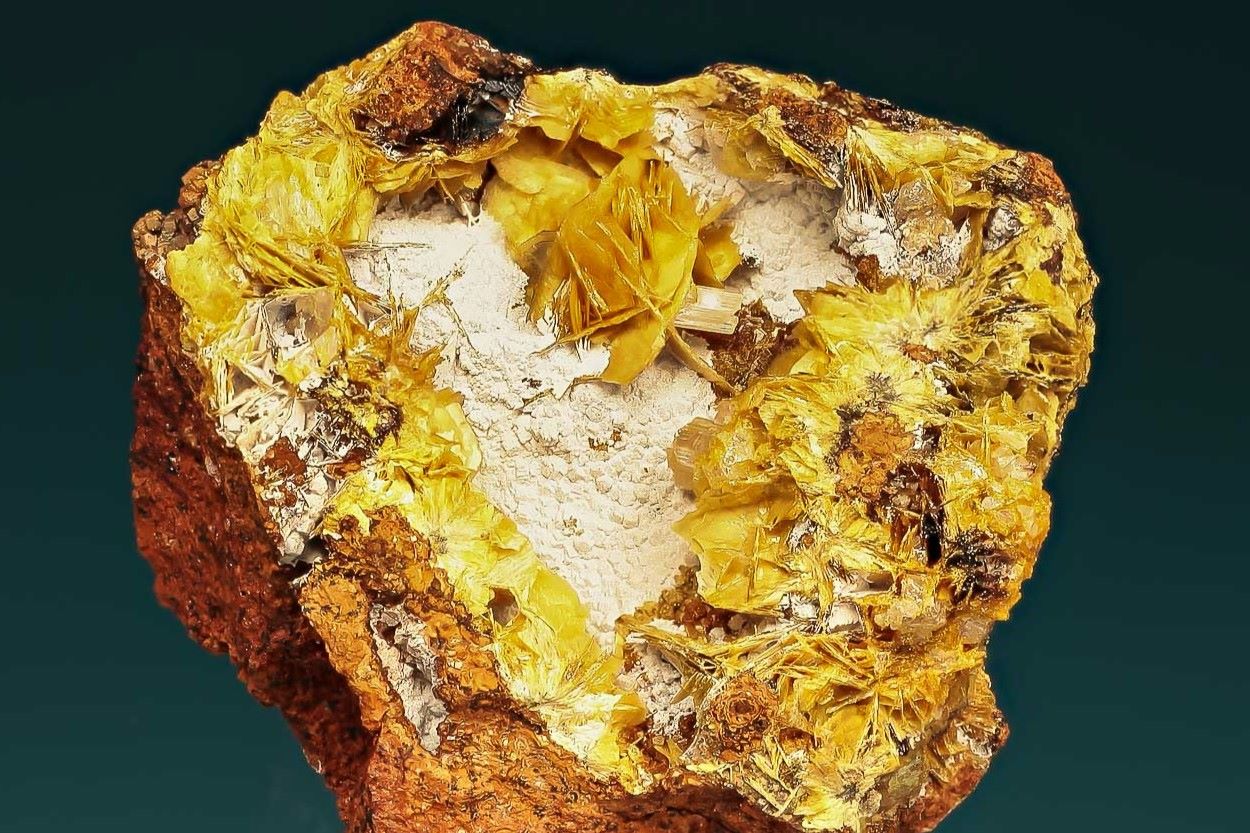
Nadorite is a rare mineral that might not be on everyone's radar, but it's fascinating once you get to know it. Found primarily in Morocco, this mineral boasts a unique chemical composition of lead, antimony, and oxygen. Its striking yellow to brownish color makes it a collector's gem. But what exactly makes Nadorite special? Why should you care about this obscure mineral? For starters, its rarity alone makes it a prized find among geologists and mineral enthusiasts. Plus, its formation process offers insights into geological conditions and mineral interactions. Ready to learn more? Let's dive into 30 intriguing facts about Nadorite that will leave you amazed!
Key Takeaways:
- Nadorite is a rare mineral with unique properties, named after its discovery location in Nador, Morocco. It has small, prismatic crystals and is valuable for scientific research and mineral collections.
- Nadorite, discovered in 1870, has a chemical formula PbSbO2Cl and is found in oxidized zones of lead-antimony deposits. Its rarity and distinct properties make it a sought-after specimen for collectors and researchers.
What is Nadorite?
Nadorite is a rare mineral that captures the interest of geologists and mineral enthusiasts alike. Named after its discovery location in Nador, Morocco, this mineral has unique properties and a fascinating history.
- Nadorite is a lead antimony oxide mineral with the chemical formula PbSbO2Cl.
- It was first discovered in 1870 in the Nador region of Morocco.
- Nadorite typically forms in oxidized zones of lead-antimony deposits.
- The mineral is often found in association with other minerals like cerussite, anglesite, and bindheimite.
- Nadorite crystals are usually small, prismatic, and can appear in colors ranging from yellow to brown.
Physical Properties of Nadorite
Understanding the physical properties of Nadorite helps in identifying and studying this mineral. These properties make it distinct and valuable for various applications.
- Nadorite has a Mohs hardness of 3 to 3.5, making it relatively soft.
- The mineral exhibits a resinous to adamantine luster, giving it a shiny appearance.
- Nadorite has a specific gravity of 6.9 to 7.1, indicating it is quite dense.
- It is transparent to translucent, allowing some light to pass through.
- The streak of Nadorite, which is the color of its powder, is white.
Chemical Composition and Structure
The chemical composition and structure of Nadorite are crucial for understanding its formation and properties. This section delves into the elements and arrangement that make up this mineral.
- Nadorite contains lead (Pb), antimony (Sb), oxygen (O), and chlorine (Cl).
- The mineral crystallizes in the orthorhombic crystal system.
- Its crystal structure consists of chains of edge-sharing SbO6 octahedra.
- Lead atoms in Nadorite are coordinated by oxygen and chlorine atoms.
- The presence of chlorine in its structure is relatively rare among minerals.
Occurrence and Locations
Nadorite is not just limited to its namesake location. It has been found in various parts of the world, each with unique geological settings.
- Besides Morocco, Nadorite has been found in France, Germany, and Italy.
- In the United States, notable occurrences include California and Arizona.
- The mineral is typically found in the oxidized zones of hydrothermal deposits.
- Nadorite often forms as a secondary mineral in the oxidation zones of lead-antimony ores.
- It can also be found in slag deposits from old smelting operations.
Uses and Applications
While Nadorite is not widely used in commercial applications, it holds significance in scientific research and collection.
- Nadorite is primarily collected by mineral enthusiasts and geologists.
- It is studied for its unique chemical and physical properties.
- The mineral can be used as a reference material in mineralogical research.
- Nadorite samples are often displayed in museums and educational institutions.
- Its rarity and unique properties make it a valuable addition to private mineral collections.
Interesting Facts about Nadorite
Beyond its scientific and practical aspects, Nadorite has some intriguing facts that add to its allure.
- Nadorite was named after the Nador region in Morocco, where it was first discovered.
- The mineral's discovery in 1870 was significant for understanding lead-antimony mineralization.
- Nadorite's unique combination of lead, antimony, and chlorine makes it a subject of study in mineral chemistry.
- The mineral's prismatic crystals can sometimes form in intricate and beautiful patterns.
- Nadorite's rarity and distinct properties make it a sought-after specimen for collectors and researchers alike.
Nadorite: A Fascinating Mineral
Nadorite, a rare mineral, captivates with its unique properties and intriguing history. Found primarily in Morocco, this lead halide mineral boasts a distinctive yellow-brown hue. Its crystal structure and chemical composition make it a subject of interest for geologists and mineral enthusiasts alike.
Beyond its scientific allure, Nadorite's rarity adds to its value among collectors. Its formation in hydrothermal veins and association with other minerals like cerussite and anglesite highlight its geological significance. While not widely known, Nadorite's unique characteristics and limited availability make it a gem in the world of minerals.
Understanding Nadorite offers a glimpse into the Earth's complex processes and the beauty hidden within its depths. Whether you're a seasoned collector or a curious learner, Nadorite's story is a testament to the wonders of our natural world. Keep exploring, and who knows what other hidden treasures you might uncover!
Frequently Asked Questions
Was this page helpful?
Our commitment to delivering trustworthy and engaging content is at the heart of what we do. Each fact on our site is contributed by real users like you, bringing a wealth of diverse insights and information. To ensure the highest standards of accuracy and reliability, our dedicated editors meticulously review each submission. This process guarantees that the facts we share are not only fascinating but also credible. Trust in our commitment to quality and authenticity as you explore and learn with us.
